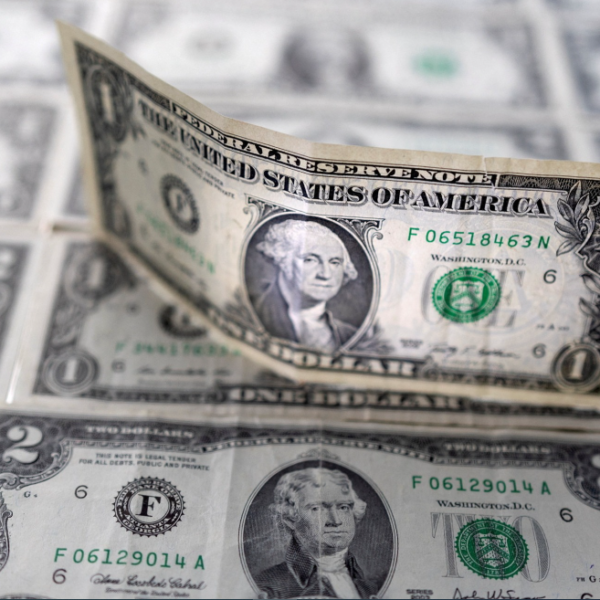The US Dollar (USD) has lost its footing after having registered substantial gains against its major rivals for two straight trading days. The upbeat macroeconomic data releases from China seem to have eased fears over a global economic slowdown. Hence, the USD is having difficulty attracting investors as a haven.
The US Dollar Index, which tracks the USD performance against a basket of six major currencies, turned south and declined toward 101.50 despite closing above 102.00 on Monday.
Daily digest market movers: US Dollar reverses direction following Monday’s climb
- US stock index futures trade in positive territory early Tuesday, pointing to a higher opening in Wall Street following Monday’s choppy action.
- The data from China showed that the world’s second-largest economy expanded by an annualized rate of 4.5% in the first quarter, much stronger than the 2.9% growth recorded in the last quarter of 2022. This reading also came in better than analysts’ estimate for an expansion of 4%. Other data revealed that Industrial Production expanded by 3.9% and Retail Sales rose by 10.6% yearly, compared to analysts’ estimate of 7.4%.
- 10-year US Treasury bond yield holds steady above 3.5% after gaining nearly 6% in the last three trading days.
- Richmond Fed President Thomas Barkin said on Monday that he wants more evidence of inflation settling back to target.
- The US Census Bureau will release Tuesday’s March Housing Starts and Building Permits data.
- The data published by the US Census Bureau revealed on Friday that Retail Sales declined by 1% monthly in March. On a positive note, March’s reading of -0.4% was revised to -0.2%.
- The University of Michigan’s (UoM) Consumer Confidence Index improved modestly to 63.5 in April’s flash estimate from 62 in March.
- The one-year consumer inflation expectation component of the UoM’s survey climbed to 4.6% from 3.6% in March, boosting the USD.
- “Monetary policy will need to remain tight for a substantial period and longer than markets anticipate,” Federal Reserve Governor Christopher Waller said on Friday. Waller further argued that the recent data show that the Fed hasn’t made much progress on its inflation goal.
- In an interview with Reuters on Friday, Atlanta Fed President Raphael Bostic noted that recent developments in the US economy were consistent with one more rate hike.
- According to the CME Group’s FedWatch Tool, markets are currently pricing in a more than 80% probability of a 25 basis points (bps) Fed rate hike in May.
- NY Fed Empire State Manufacturing Index improved sharply to 10.8 in April from -24.6 in March, compared to the market expectation of -18.
- On Wednesday, the Fed will release the Beige Book. Existing Home Sales and Initial Jobless Claims data will be featured in the US economic docket on Thursday ahead of S&P Global’s Manufacturing and Services PMI surveys on Friday.
- Previewing the Fed’s publication, “Since the March 21-22 meeting, the data suggest that activity is slowing, the labor market is softening, and price pressures are easing,” said analysts at BBH. “Notably, supply chains continue to improve. We believe the Beige Book will highlight these trends that support a pause after what is widely expected to be another 25 bps hike, leaving the door open for further tightening if needed.”
Technical analysis: US Dollar struggles to continue to outperform Euro
Following the two-day slide that saw the pair come within a touching distance of 1.0900, EUR/USD regained traction early Tuesday. The Relative Strength Index (RSI) indicator on the daily chart has returned to 60, reflecting the lack of seller interest. Furthermore, the pair continues trading within the ascending regression channel from late September.
EUR/USD faces immediate resistance at 1.1000 (psychological level, static level). Once the pair reaffirms that level as support, it could target 1.1100 (psychological level, static level), 1.1160 (static level from April 2022), and 1.1200 (psychological level).
On the downside, 1.0900 (20-day Simple Moving Average (SMA) stays intact as support ahead of 1.0800 (psychological level), 1.0760 (50-day SMA), and 1.0720 (100-day SMA).
How does Fed’s policy impact US Dollar?
The US Federal Reserve (Fed) has two mandates: maximum employment and price stability. The Fed uses interest rates as the primary tool to reach its goals but has to find the right balance. If the Fed is concerned about inflation, it tightens its policy by raising the interest rate to increase the cost of borrowing and encourage saving. In that scenario, the US Dollar (USD) will likely gain value due to decreasing money supply. On the other hand, the Fed could decide to loosen its policy via rate cuts if it’s concerned about a rising unemployment rate due to a slowdown in economic activity. Lower interest rates are likely to lead to a growth in investment and allow companies to hire more people. In that case, the USD is expected to lose value.
The Fed also uses quantitative tightening (QT) or quantitative easing (QE) to adjust the size of its balance sheet and steer the economy in the desired direction. QE refers to the Fed buying assets, such as government bonds, in the open market to spur growth, and QT is precisely the opposite. QE is widely seen as a USD-negative central bank policy action and vice versa.

